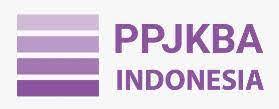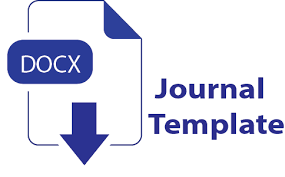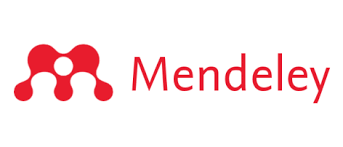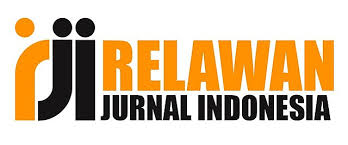Visual Learning Meets Dual Coding: Rethinking Arabic Reading Pedagogy
DOI:
https://doi.org/10.58223/al-irfan.v9i1.454Keywords:
Dual Coding, Visual Learning, Arabic Reading PedagogyAbstract
The main problem of this research is the low optimization of students' reading skills (maharah qiroah) due to the dominance of conventional methods, so it is necessary to implement an Image-Based Learning approach based on Dual Coding theory. This study aims to analyse the implementation of the Image-Based Learning (IBL) approach based on the Dual Coding theory in improving Arabic reading skills (maharah qiroah) of 12 postgraduate students during the learning process in the classroom. The study employs a descriptive qualitative method, with data collected through direct observation, in-depth interviews, and documentation of the learning process in the Arabic Language Education Programme at UIN Maulana Malik Ibrahim Malang. Data validity is ensured through triangulation of sources and data collection techniques. The results indicate that the IBL approach is effective in activating students' schemas, enriching vocabulary, deepening understanding of Arab cultural context, and developing critical thinking skills through text structure analysis. The integration of Dual Coding theory enables students to process information simultaneously through visual and verbal channels, significantly enhancing retention and reading comprehension. These findings reinforce the evidence of the effectiveness of interactive visual media in Arabic language learning. The contribution of this research lies in affirming the strategic role of visualisation in developing analytical skills and comprehensive discourse understanding. Therefore, the Dual Coding-based IBL approach is recommended as an adaptive pedagogical strategy in maharah qirā’ah learning to meet the demands of 21st-century learning.
References
Alkhazaleh, M., & Abu Sal, A. (2024). Impact of Using Mind Maps to Improve Reading Comprehension Skills of Eighth Grade Students. Eurasian Journal of Applied Linguistics, 10(2), 262–273. https://doi.org/10.32601/ejal.10222
Atthohiro, N. N. A., & Muhammad, K. (2025). Pengembangan Media Pembelajaran Maharah Qiro’ah Berbasis Edutainment Dengan Bantuan Website Socrative. Ukazh: Journal of Arabic Studies, 6(1), 1–19. https://doi.org/https://doi.org/10.37274/ukazh.v6i1.1445
Creswell, J. W., & Guetterman, T. C. (2024). Educational research: Planning, conducting, and evaluating quantitative and qualitative research. ERIC.
Dalimunthe, N. K., & Rahmaini, R. (2023). Media Pembelajaran Berbasis Game Gambar Berangkai dalam Pembelajaran Maharah Istima’. Jurnal Educatio FKIP UNMA, 9(3), 1378–1385. https://doi.org/https://doi.org/10.31949/educatio.v9i3.5539
Fadhilla, R. N., & Azhari, S. (2024). Analisis Perbandingan Penggunaan Media Pembelajaran Digital Powerpoint Dan Queizzi Dalam Meningkatkan Interaksi Belajar Siswa Dalam Pembelajaran Bahasa Arab. Ihtimam: Jurnal Pendidikan Bahasa Arab, 7(02), 39–49. https://doi.org/https://doi.org/10.36668/jih.v7i02.1010
Habib, I., Afrilianti, D., & Huda, M. (2025). Pemanfaatan Quizizz dan Al-Qalam AI Dalam Pembelajaran Maharah Kitabah Berbasis Nahwu. Al-Lahjah : Jurnal Pendidikan, Bahasa Arab Dan Kajian Linguistik Arab, 8(1), 1024–1033. https://doi.org/https://doi.org/10.32764/lahjah.v8i1.5947
Habib, I., & Kabalmay, T. (2025). Evaluasi Implementasi Kurikulum Merdeka Pada Pembelajaran Bahasa Arab Kelas X di MAN 1 Gresik. JLPI: Jurnal Literasi Dan Pembelajaran Indonesia, 5(1), 22–32. https://jurnalfkip.samawa-university.ac.id/JLPI/article/view/893
Habib, I., Zaki, M., & Mustofa, S. (2025). Digital Adaption and Linguistic Change in Arabic Language Usage Through Social Media. Abjadia : International Journal of Education, 10(2), 318–328. https://doi.org/10.18860/abj.v10i2.32626
Herawati, H., & Zufa, Z. (2024). Pengaplikasian Media Dalam Pembelajaran Bahasa Arab Pada Peserta Didik MTs. Assalam Plered. Madani: Jurnal Ilmiah Multidisiplin, 2(8), 440–443. https://doi.org/https://doi.org/10.5281/zenodo.13353875
Humaidi, H. (2023). Strategi Penerapan Metode Mind Mapping dalam Penguasaan Mufrodat Bahasa Arab:(Studi Kasus di Madrasah Ibtidaiyah Almaarif 05 Singosari). Qismul Arab: Journal of Arabic Education, 2(02), 83–94.
Jamaan, A. R. bin. (2025). A Study of Collaborative Learning Strategies Effectiveness in Mastering Arabic Language among Students in Higher Education. International Journal of Research and Innovation in Social Science, 9(1), 1893–1910. https://doi.org/https://dx.doi.org/10.47772/IJRISS.2025.9010152
Kamalia, K. (2024). The Implementation of Multistrategy Approach in Improving Arabic Language Skills at Medan Health Polytechnic Nursing. Arabiyatuna: Jurnal Bahasa Arab, 8(1 May), 299–324. https://doi.org/https://doi.org/10.29240/jba.v8i1.9684
Masfufah, N. F., & Nurdyansyah, N. (2023). Imaginative Image-Based Learning Media Innovation to Improve Creativity and Psychomotor Abilities in Elementary Schools. Journal of Innovation in Educational and Cultural Research, 4(3), 471–487. https://doi.org/https://doi.org/10.46843/jiecr.v4i3.718
Mir, K. J., Fatima, S. A., & Fatima, S. T. (2023). Impact of dual coding strategy to enhance students’ retention of scientific concepts in middle schools. Annals of Human and Social Sciences, 4(4), 655–666. https://doi.org/https://doi.org/10.35484/ahss.2023(4-IV)63
Muassomah, M., Yurisa, P. R., & Bin Yahaya, M. F. (2022). Mind Mapping: Reading Comprehension Technique of Arabic Texts for Students in Higher Education. Jurnal Al Bayan: Jurnal Jurusan Pendidikan Bahasa Arab, 14(2), 438–455. https://doi.org/10.24042/albayan.v14i2.14350
Muid, A., Ilmiani, A. M., & Fikri, A. (2021). Typology of Student Learning in Qira’ah Subject with Multiple Intelligence Perspective. Ta’lim Al-‘Arabiyyah: Jurnal Pendidikan Bahasa Arab & Kebahasaaraban 5, 5(1), 84–96. https://doi.org/10.15575/jpba.v5i1.12434
Muna, Z. T., Hidayah, N., Le Souef, A., & Devaney, A. (2025). Mind Mapping as an Innovation in Reading and Writing Learning: A Study of Understanding Arabic Texts. Alibbaa’: Jurnal Pendidikan Bahasa Arab, 6(1), 120–137. https://doi.org/https://doi.org/10.19105/ajpba.v6i1.15963
Mustafa, M., Alisa, N., & Pamessangi, A. A. (2023). Pengembangan media interaktif digital bahasa arab dengan media smart apps creator kelas X di SMA Negeri 7 Luwu Timur. Jurnal Sinestesia, 13(1), 252–260. https://sinestesia.pustaka.my.id/journal/article/view/319
Nurjamilah, S., & Fahyuni, E. F. (2024). Penerapan Media Pembelajaran Berbasis Web “Genially” Terhadap Hasil Belajar Siswa Pada Materi Mufradat Bahasa Arab. Al Mi’yar: Jurnal Ilmiah Pembelajaran Bahasa Arab Dan Kebahasaaraban, 7(2), 700–707. https://doi.org/10.35931/am.v7i2.3862
Qomaruddin, Q., & Sa’diyah, H. (2024). Kajian Teoritis tentang Teknik Analisis Data dalam Penelitian Kualitatif: Perspektif Spradley, Miles dan Huberman. Journal of Management, Accounting, and Administration, 1(2), 77–84. https://doi.org/https://doi.org/10.52620/jomaa.v1i2.93
Sadiyah, H. (2023). Upaya peningkatan pemahaman teks Arab pada pembelajaran Maharah Al-Qiroah melalui media Quizizz. Naskhi Jurnal Kajian Pendidikan Bahasa Arab, 5(2), 91–99.
Thoyib, F. M., Jinan, M., & Hidayat, S. (2023). Penggunaan Teknologi Multimedia dalam Mendukung Pembelajaran Bahasa Arab dengan Buku Al-‘ Arabiyyah Bayna Yadayk. Iseedu: Journal of Islamic Educational Thoughts and Practices, 7(2), 213–222. https://doi.org/10.23917/iseedu.v7i2.24201
Udin, R., Hangkiho, R., Jundi, M., & Hasibuan, R. (2024). Leveraging AI-Generated Images for Visual Stimulus-Based Arabic Speaking Assessment Assessing Arabic speaking skills. Islamic Manuscript of Linguistics and Humanity ( IMLAH ), 6(1), 61–77. https://ejournal.uinib.ac.id/jurnal/index.php/imlah/article/view/9680
Yolanda, R., Firdaus, D., Hendri, M., & Zaharo. (2024). Brain Based Learning Using Augmented Reality Technology As An Arabic Learning Media. Jurnal Pendidikan Bahasa Dan Sastra Arab, 6(1), 261–278. https://doi.org/10.21154/tsaqofiya.v6i1.377
Yusuf, T. (2024). Interdisciplinary Approaches to Arabic Language Learning: Enhancing Engagement and Global Competence: Language Learning. Al-Ḍād Journal, 8(2), 79–88. https://doi.org/https://doi.org/10.22452/aldad.vol8no2.5
Zainuri, Z., & Wahyudi, I. (2023). Pendampingan Pembelajaran Maharah Qira’ah Menggunakan Media Visual. An-Nuqthah, 3(2), 93–100. https://doi.org/https://doi.org/10.62097/an-nuqthah.v3i2.1498
Downloads
Published
How to Cite
Issue
Section
License
Copyright (c) 2025 Vivia Salma Azzaahro, Ikhwanul Habib, Taqiyuddin Kabalmay, Muhibbuddin

This work is licensed under a Creative Commons Attribution 4.0 International License.
Lisensi :
Al-Irfan: Journal of Arabic Literature and Islamic Studies is published under conditions Creative Commons Attribution 4.0 International License / CC BY 4.0 This license permits anyone to copy and redistribute this material in any form or format, modify, modify, and make derivative works of this material for any purpose, including commercial purposes, so long as they credit the author for the original work.










